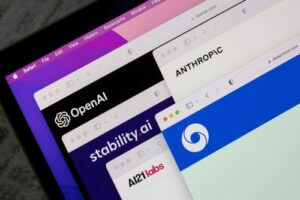Quick Overview
- Google’s AI Lead: Google’s AlphaGo victory and BERT-large model instilled fear in Microsoft due to infrastructure gaps and rapid AI progress.
- Critical Email Chain: CTO Kevin Scott urged CEO Satya Nadella to respond strategically; Nadella pushed CFO Amy Hood for a decisive investment in OpenAI.
- OpenAI Investment: Microsoft invested $1 billion in OpenAI in 2019, later increasing to $13 billion by 2023, to close the gap with Google.
- Key Players: Satya Nadella (CEO), Kevin Scott (CTO), Amy Hood (CFO), and Sam Altman (OpenAI CEO) drove Microsoft’s strategic AI response.
- Strategic Outcome: Microsoft’s partnership with OpenAI fortified its AI capabilities, transforming fear into a competitive advantage over Google.
In the competitive world of technology, the slightest edge can mean the difference between dominance and mediocrity. Newly surfaced emails from the Department of Justice’s antitrust case against Google provide a fascinating glimpse into how Microsoft executives viewed their competitor’s advancements in AI, revealing a mix of alarm and envy over Google’s rapid progress. Microsoft CEO Satya Nadella and CTO Kevin Scott saw Google’s AI models as formidable challenges, particularly AlphaGo and BERT-large. Let’s delve deeper into how Microsoft’s leaders responded to Google’s AI lead and how their strategic investment in OpenAI played a pivotal role in reshaping their approach to artificial intelligence.
AlphaGo and BERT-Large: Google’s AI Edge Troubled Microsoft
In 2017, Google’s DeepMind stunned the tech world when its AlphaGo model defeated Go world champion Ke Jie, cementing Google’s reputation as a leader in AI. Microsoft CTO Kevin Scott, aware of Google’s rapid advancements, sounded the alarm in internal emails. He specifically cited Google’s AlphaGo models and BERT-large, a natural language processing model, as areas where Microsoft lagged.
“Very, very worried about Google’s rapidly growing AI capabilities,” Scott wrote. He also expressed frustration that “just replicating BERT-large wasn’t easy to do for us.” Scott attributed Microsoft’s difficulties to infrastructure gaps and resource constraints, highlighting how Google’s vast resources and head start left Microsoft playing catch-up.
Critical Emails Show Microsoft’s Response to Google’s AI Dominance
The email trail reveals just how concerned Microsoft’s leadership was about Google’s AI dominance. In 2019, Scott sent a message to Nadella outlining his worries and calling for a strategic response. Nadella, seeing the urgency in Scott’s message, forwarded it to CFO Amy Hood, emphasising the need to invest heavily in OpenAI.
“Very good email that explains why I want us to do this … and also why we will then ensure our infra folks execute,” Nadella wrote to Hood.
Scott’s email described how Google’s BERT had been available for six months before Microsoft managed to cobble together a similar scale model. “In the time it took us to hack together the capability to train a 340M parameter model, [Google] had a year to figure out how to get it into production and to move on to larger scale, more interesting models,” Scott lamented.
Microsoft Invests $1 Billion in OpenAI to Close Google Gap
Microsoft’s solution to this looming challenge was to invest $1 billion in OpenAI in 2019. This partnership aimed to close the gap between Microsoft and Google in the AI space. With OpenAI’s cutting-edge research and Microsoft’s infrastructure, the tech giant hoped to leapfrog its competition.
Scott had high hopes for collaborating with OpenAI and believed it would help Microsoft catch up with Google. He praised OpenAI’s progress in developing natural language models and saw a fruitful partnership on the horizon.
But a $1 billion investment was just the beginning. By 2023, Microsoft had expanded its investment in OpenAI to a staggering $13 billion, cementing its commitment to becoming a leader in AI. The collaboration led to notable advancements like integrating OpenAI’s GPT-3 model into Microsoft products like Azure and Office 365.
Meet the Key Players Behind Microsoft’s OpenAI Investment
- Satya Nadella: As Microsoft’s CEO, Nadella played a pivotal role in advocating for investment in OpenAI. He forwarded Scott’s email to Hood, pushing for a decisive response.
- Kevin Scott: Microsoft’s CTO, Scott, was a vocal critic of Microsoft’s lagging infrastructure. He repeatedly emphasised the urgency of catching up with Google in AI, pointing out that Microsoft was “multiple years behind the competition in terms of ML scale.”
- Amy Hood: Microsoft’s CFO received Nadella’s forwarded email and helped steer the company toward its billion-dollar partnership with OpenAI.
- Sam Altman: OpenAI’s CEO oversaw the organisation’s rapid advancements in AI and managed the collaboration with Microsoft.
Microsoft and OpenAI Collaboration Poised to Challenge Google
Microsoft’s relationship with OpenAI has since borne significant fruit, giving the tech giant access to world-class AI models and positioning it as a stronger competitor against Google. The partnership enabled Microsoft to incorporate OpenAI’s models into Azure, bringing powerful language models to a broader audience.
Despite the initial alarm and envy, Microsoft now stands as a formidable player in the AI space. The internal emails show how strategic foresight and investment can turn corporate fear into a competitive advantage. As the AI arms race continues, Microsoft’s investment in OpenAI might be the edge it needs to dethrone Google.
Microsoft’s OpenAI Investment Marks Turning Point in AI Race
The revelations from the Department of Justice’s antitrust case highlight the immense pressure that tech companies face to stay ahead of the competition, especially in AI. Microsoft’s swift action in response to Google’s advancements illustrates the importance of strategic partnerships and investment. In this corporate drama of fear and ambition, Microsoft’s decision to back OpenAI might be remembered as a turning point in the battle for AI supremacy.











